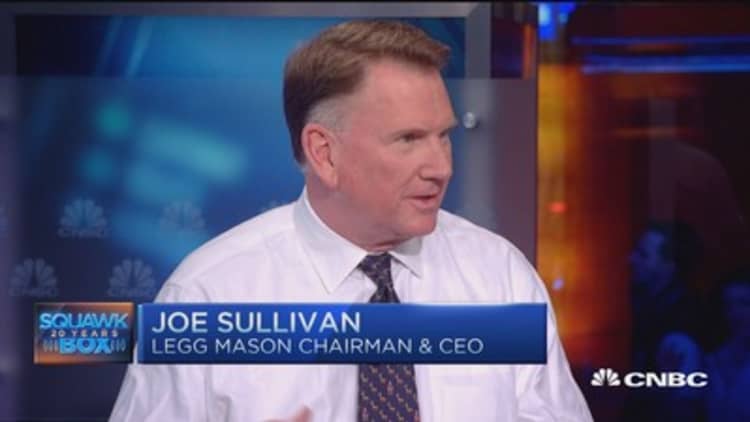
Stock pickers had a brutal 2015, and there is little wonder why.
It's hard to beat the market when you're not on board with the best-performing companies. Such was the fate of mutual fund managers, who again fell short of their benchmarks over the past 12 months.
In a year that many had touted as ripe for the return of stock pickers, just 27 percent of large-cap core funds topped the S&P 500, according to a recent Goldman Sachs analysis. That number falls well below the 10-year average of 36 percent.
The root of the problem is pretty simple: Most managers were underweight many of the stocks that saw the biggest gains.
Read MoreThe only stocks in the S&P 500 that matter
Specifically, managers missed the boat on Netflix and Amazon, the two best performers on the with respective returns of 140 percent and 117.6 percent as of Monday's market close. They also underallocated to Starbucks (up 46.7 percent), Facebook (up 35.8 percent), General Electric (22.3 percent) and Microsoft (up 20.4 percent).
One of the few big performers stock pickers got right was Alphabet (formerly Google), which is up 45.2 percent year to date. Active managers are most overweight CVS (up 2.2 percent) relative to benchmark and most underweight Exxon Mobil (down 14.8 percent), according to Goldman.
Funds have repositioned recently now that the Fed has raised its benchmark interest rate, with managers increasing their overweight positioning on financials.
As a whole, a basket of stocks Goldman put together that is most overweight relative to the benchmark was recently down 1 percent for the year, compared to the S&P 500, which was basically unchanged in total return. A basket of the most underweighted stocks was down 2 percent.
This year's results only add fuel to the active versus passive debate.
Investors in 2015 flocked to exchange-traded funds, the mostly passively managed vehicles that track market indexes like the S&P 500 and offer lower fees, more liquidity and tax advantages.
Read MoreWhich is best: Active vs. passive fund management
For the year, the scorecard is stark: $198.8 billion in inflows for global equity ETFs and $177.2 billion in outflows for mutual funds, according to Bank of America Merrill Lynch. Mutual funds remain the leader by a large margin, with $13.2 trillion in assets excluding money market funds, according to the latest data from the Investment Company Institute.
However, ETFs are catching up, with the $2.1 trillion currently under management, an increase of 11.3 percent from the previous year.






